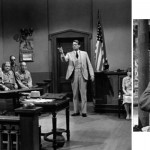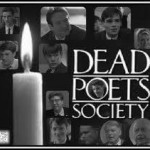Cambridge University turned 800 in 2009
CAMBRIDGE HAS BECOME SO CLOSE TO ME!
Some time has passed since my visit to Cambridge as a participant of an Amazing Minds Conference, but still that event stands in my mind vividly, and the magnificent and breathtaking sights of the city that has captured my imagination have become a part of my life, the memories for me to treasure. Three million visitors a year come to Cambridge to take home memories of one of the most beautiful cities in Europe. It is a small city but with an international reputation.

Every now and then the numerous photos evoke the brightest memories of the event and the spectacular places where it was held.
Brief History of Cambridge
Cambridge is a city that is steeped in an interesting and remarkable history that has shaped the way the city is today.
The River Cam (or Granta as it was previously named). There was a bridge over the river Granta, as the Cam used to be known, from at least 875, when the Anglo-Saxon Chronicle refers to ‘Grantebrycge’) winds its way through an area of extensive marshland known as ‘The Fens’, yet people first established communities in the region over two thousand years ago. Iron Age tribes built the first settlement near to what is now Castle Hill, creating a convenient ‘bridge’ over the river.
Cambridge was a flourishing town long before the first students and teachers arrived 800 years ago.
About a hundred years later, the Romans invaded and seized the settlement turning it into a town. They used it as a crossing point for the Via Devana to link other towns in the north with Colchester in the south. After the Romans, the Saxons took hold of Cambridge and further extended the parameters of the town. The tower of St Benedict’s Church (or St Bene’t’s as it is known in Cambridge) dates from this period and is therefore the oldest surviving building in the city.
The castle from which Castle Hill takes its name was built in 1068 by the Normans, under the rule of William the Conqueror. Although the castle no longer exists, you can still climb to the top of the mound from where you can see right across the city.
The town developed as a trading centre, important enough in the tenth century to have a mint, and prosperous enough in the early eleventh century to build a stone tower to St Bene’t’s Church. Its importance increased when soon after the Norman Conquest William I built a motte and baily castle on Castle hill as a base for his military operations against Hereward the Wake’s stronghold at Ely, and Domesday Book of 1086 shows the town had about 400 houses.
The town at this time was known as Cantebrigge but the name underwent several changes and finally became ‘Cambridge’. The river’s name was also changed to reflect the fact that Cambridge provided a bridge over what ought surely to be called the River Cam, not the River Granta! However, the river is still known as the Granta if you walk along the bank in the direction of the village of Grantchester!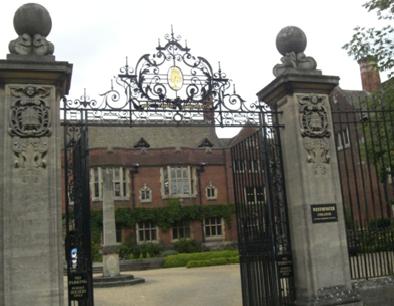
The commercial significance of Cambridge continued to grow in the twelfth century, with river trade becoming increasingly important.
It was to this flourishing market town that a group of students fleeing from riots in Oxford came in 1209. Seventeen years later the community of teachers and students had become established with a chancellor, and in 1318 it received formal recognition from the Pope as a ‘stadium generale’. Meanwhile more religious houses were established in the town.
The first academics arrived in Cambridge in 1209 from Oxford. The first of the University’s colleges, Peterhouse, was founded in 1284, followed by Clare College in 1326, Pembroke in 1347 and Gonville and Caius in 1348. The University of Cambridge today comprises of some 31 colleges, three of which are just for women, and two solely for graduates. Famous students (or ‘alumni’) of the University of Cambridge include Isaac Newton, Charles Darwin, Professor Stephen Hawking and Oliver Cromwell, whose head is said to be buried under the chapel at Sidney Sussex College!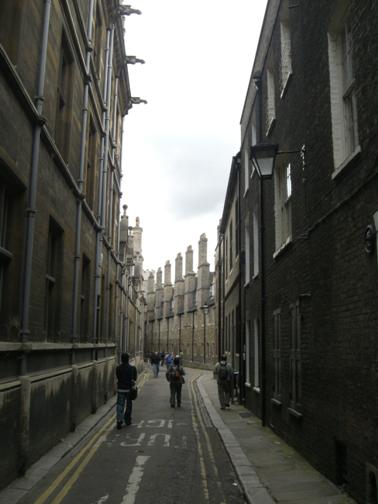
The first college for scholars at the university was Peterhouse, founded by the bishop of Ely in 1284. Early colleges began as endowed homes mainly for the equivalent of post-graduates; until the sixteenth century most undergraduates lived elsewhere in lodgings and later in hostels
In 2009 Cambridge University celebrated its 800th anniversary
“But, where is the University?” is a question many visitors to Cambridge ask, but no one can point them in any direction. For there is no campus, for the university has lecture halls, libraries, laboratories, museums and offices throughout the city. And most of its members are the students and dons of the thirty-one self-governing colleges.
Individual colleges choose their own students, subject to the university’s minimum entrance requirements, and undergraduates usually live and study in their colleges, where they are taught in very small groups, a form of teaching known as ‘supervisions’.
Lectures, and laboratory and practical work, are organized by the university and held in the university buildings.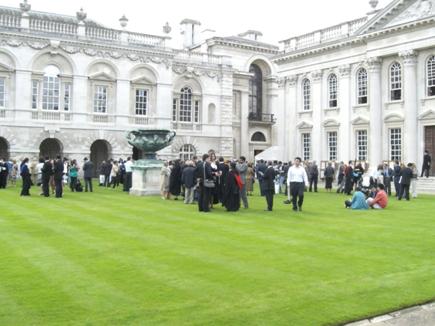
Altogether there are over 12,000 undergraduates (about 49 per cent of them are women who were allowed to take the university exams in 1881 but it was not until 1948 that they were awarded degrees, despite repeated attempts to get the rules changed, and 15 per cent from overseas), over 6,000 postgraduates and about 2,000 dons. Dons are teachers and administrators, most of them fellows of individual colleges who also hold university teaching appointments. As well as teaching, research is of major importance – since the beginning of the twentieth century more than eighty university members won Nobel prizes.
The university has a huge number of buildings for teaching and research. It has more than sixty special subject libraries, as well as the University Library, which as a copyright library is entitled to a copy of every book published in Britain. It was opened in 1934, and has over six million books and also documents ranging from rare manuscripts to copies of the Beano. It also has more than thirty science laboratories, ten museums – including the splendid Fitzwilliam Museum – and the Botanic Garden.
The more recent buildings are to the west of the river but the oldest are in the heart of the city.
Old Schools opposite Great St Mary’s Church includes a university teaching building from the fourteenth century. In the early days students, sometimes only fourteen or fifteen years old, took a seven years course studying grammar, rhetoric and logic and then arithmetic, geometry, astronomy and music. Exams were verbal and instruction was in Latin – the language of the Church and learned.
The complex now houses the central administration of the university, and the eighteenth-century Senate House next to it is where university policy is debated and where degrees are conferred.
Built, altered, added and restored over 700 years, the Cambridge colleges cover a tremendous range of architectural styles: a medieval court, a Tudor gatehouse, eighteenth century formality, nineteenth century Gothic fantasy and the ultra-modern can be all admired in a short walk around the city.
Many of the oldest colleges back on to the river Cam, which is why the beautiful expanse of riverside lawns, trees and meadows behind them is called the Backs. Vivid in spring with crocuses, daffodils and bright green willow, and spectacular in autumn, the Backs provide stunning views of the colleges. Punting ( boating) along the Cam is a traditional way to enjoy the Backs, gliding under nine elegant bridges and passing eight colleges on the way.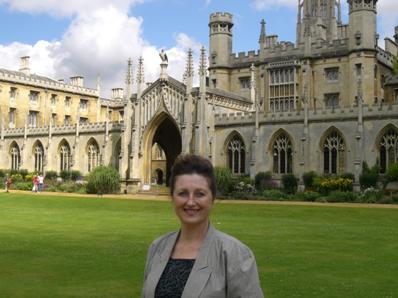
Most of the thirty-one colleges have undergraduates, although a few are for graduates only, and they range in size from under 250 to over 1,000 students, although most have over 400. Three colleges are for women only and the rest are now mixed. The head of college is in most cases called a master, and the senior members, involved in teaching, research and administration, are known as fellows.
Many students live and study in the ancient college buildings, but the popular image of the Cambridge undergraduate waited on by college servants, climbing in after hours, getting up to pranks and being chased by proctors in flapping gowns has now passed into history. May Balls, bumps and rags still, however live on.
Students’ rooms in college are still cleaned and their beds often made, by ‘bedders’, but the ‘gyp’ or manservant, has disappeared. The old rules making students get back at night before the gates closed have also vanished, along with the celebrated practice of climbing in.
Undergraduates no longer go about the city wearing gowns. They used to have to wear them for lectures, supervisions, chapel, meals in hall and outside the college after dark until 1970.
. Now they are worn mainly on special occasions such as chapel services, formal college meals in hall and degree ceremonies.
Years ago university officials called proctors used to patrol the streets at night with their ‘bulldogs’, or university constables, on the lookout of errant students; there are still proctors responsible for university discipline, but they have a much lower profile now The famous May Balls are held to celebrate the end of exams, when undergraduates have finished their degree courses studying subjects which range from accountancy to zoology. The lavish balls are held by colleges and a traditional way to round them off is to punt (boat) to Granchester for breakfast.
They are held in May Week, a round of celebration actually is held in June.
Another May Week event is the ‘bumps’, a rowing ‘race’ designed for the narrow Cam in which rowing ‘eights’ race one behind the other, starting one and a half length apart, the aim to bump the boat in front.
Rowing is a traditional sport for Cambridge students and many colleges have their own boathouses.
For the famous Oxford-Cambridge race the Cambridge crew practice at Ely, where conditions on the Great Ouse are closer to those on the Thames.
Cambridge students are also renowned for music and drama, the chapel choirs of King’s and St John’s colleges are known throughout the world.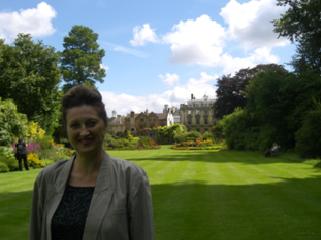
Cambridge gets much of its character from the intermingling of town and gown, its shopping streets running between the colleges. It is a place where university and city people live and work, and where college gatehouses, pinnacles and elaborate architectural flourishes are part of the street scene, juxtaposed with interesting shops and colourful market stalls. With so many students and dons in Cambridge, its bookshops are among the finest in the country.














